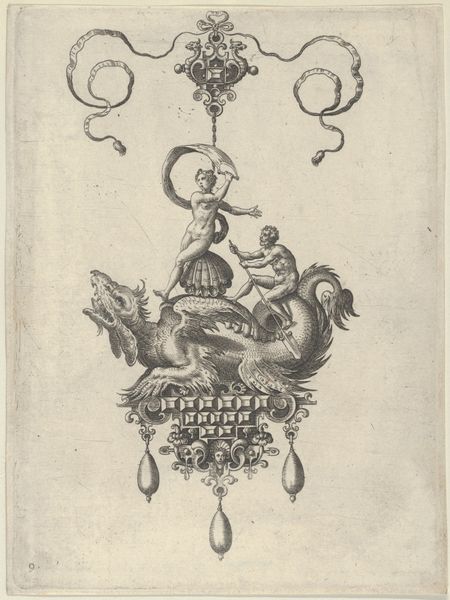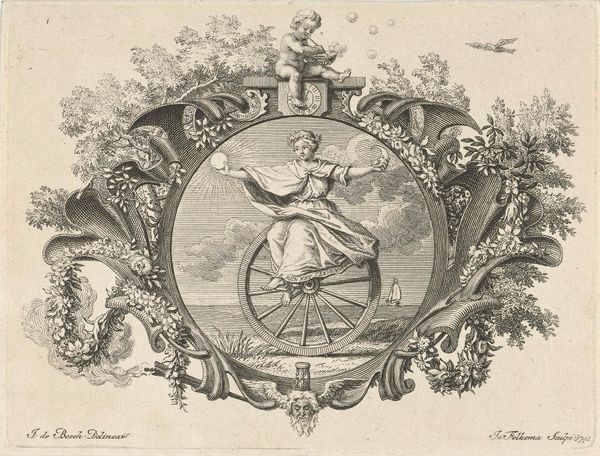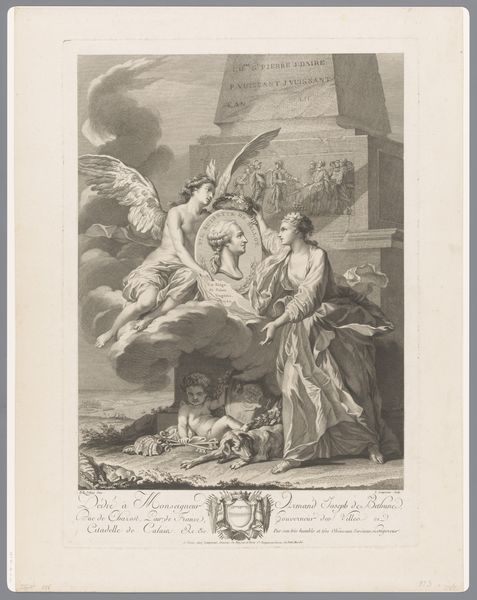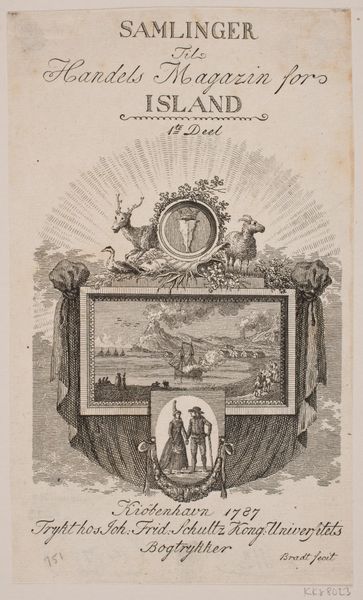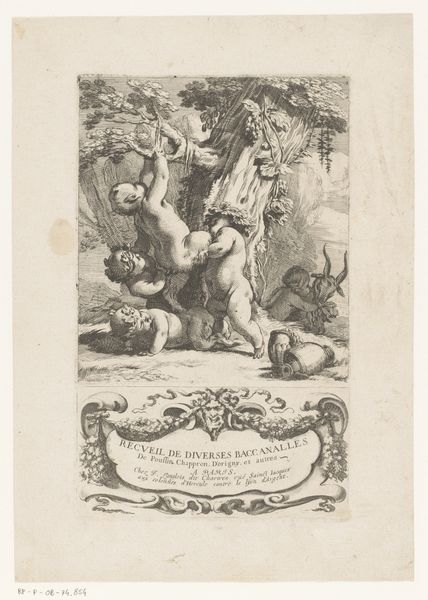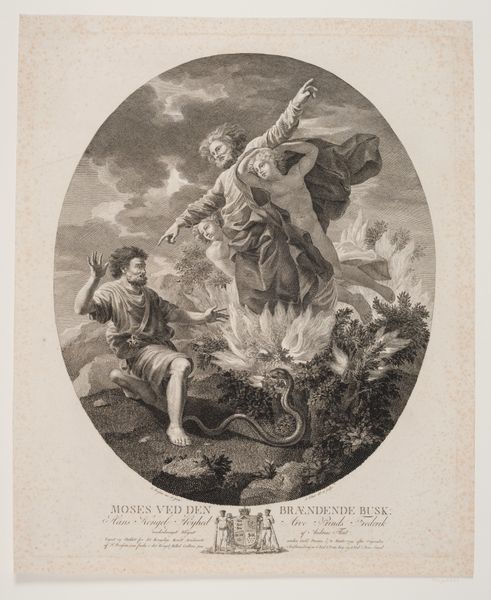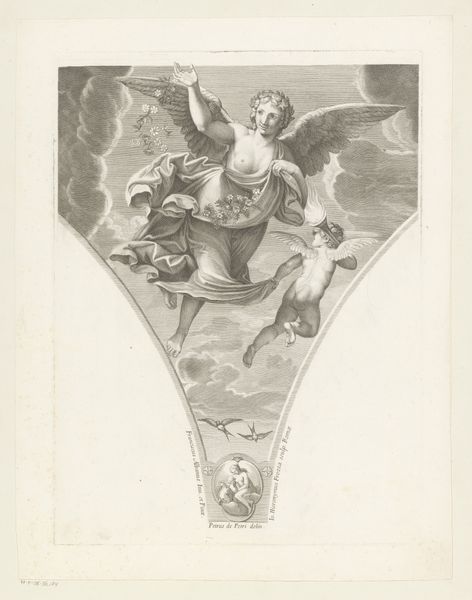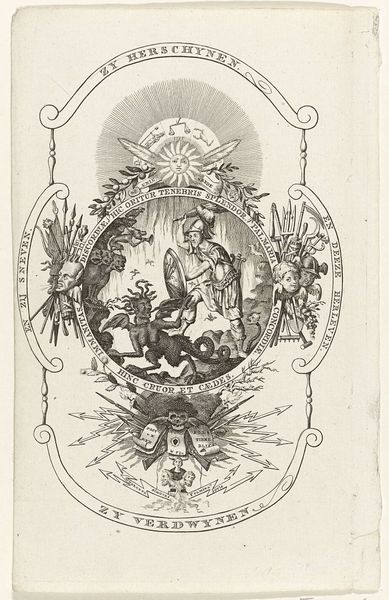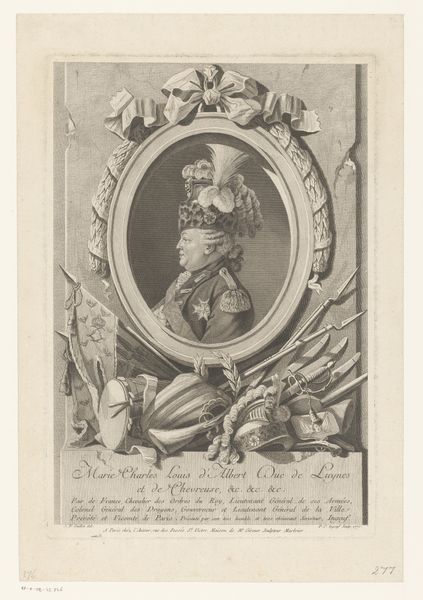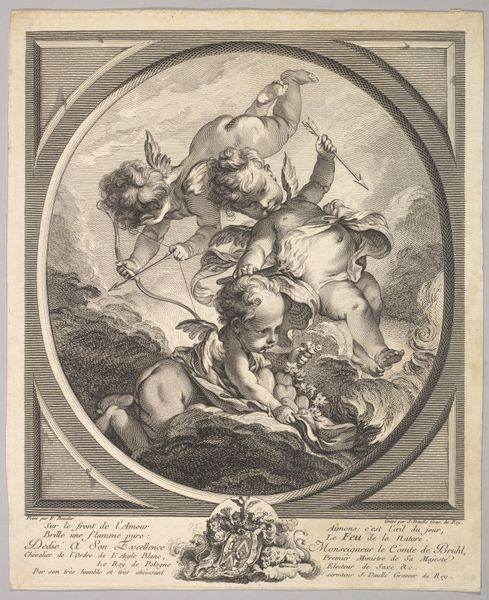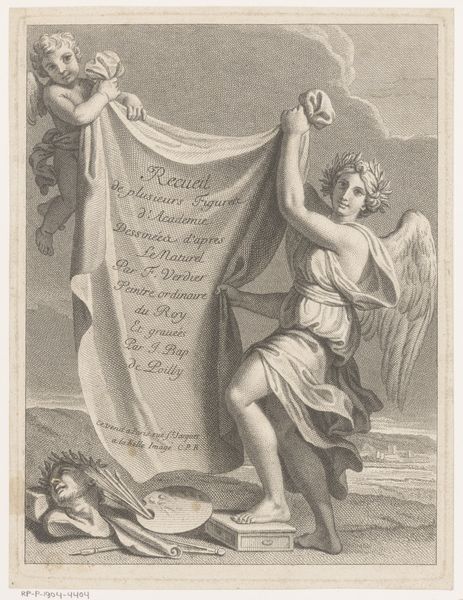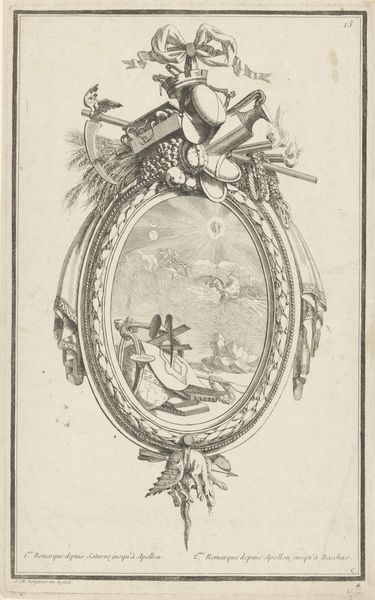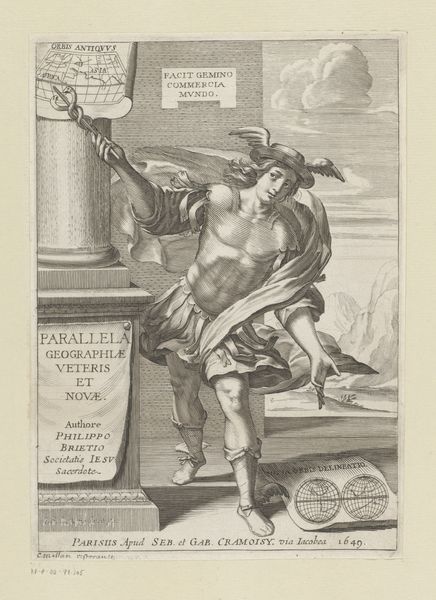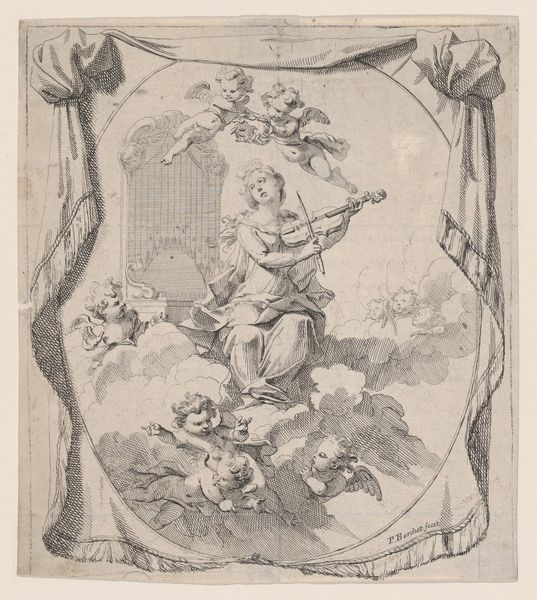
print, etching, engraving
#
allegory
# print
#
etching
#
landscape
#
classical-realism
#
figuration
#
romanticism
#
line
#
history-painting
#
engraving
Dimensions: 254 mm (height) x 200 mm (width) (bladmaal), 234 mm (height) x 180 mm (width) (Plademål), 164 mm (height) x 163 mm (width) (billedmaal)
Curator: This print, “Directions for the Kattegat,” an etching and engraving attributed to J.F. Clemens from the late 18th to early 19th century, depicts a somewhat allegorical scene related to maritime navigation. The location specifies this artwork resides at the SMK - Statens Museum for Kunst. What are your first thoughts? Editor: My immediate reaction is… stark. The lines are incredibly precise, giving it an almost technical feel, yet the billowing clouds and figures suggest something more Romantic. It feels caught between eras. Curator: It’s interesting that you highlight that tension. Look closely at the lower portion of the piece. It's rich with the symbolism of cartography and maritime trade. There is a compass visible, nautical tools; clear indicators of the labor required to create maps and control trade routes through a sea passage between Denmark and Sweden. Editor: Right, I'm drawn to that winged figure holding a shroud back from the seated woman. The labor to expose her and unveil whatever knowledge or skill she is harboring is very clearly linked to masculine ideas of production. It's this imposition on the female form that gives the etching such complex meanings. Curator: The precision with which the maps and navigation tools are engraved points towards the social importance of accurately charting waterways at this historical juncture. Maritime trade, of course, depended on that precision for material movement. Editor: Absolutely, it’s an articulation of power. This “direction” wasn’t neutral information; it controlled access. The print’s creation and distribution further cemented this dominance, both geographically and socially. And that heroic, godlike figure contrasts starkly with the passive pose of the female figure; very loaded in terms of social messaging. Curator: It suggests a planned and designed interaction between commerce, labour, and access in the sphere of material culture. Editor: And perhaps by framing "Directions for the Kattegat" through that allegory, the piece is both a celebration of progress but also a subtle commentary on whose progress truly matters. It gives you so much to consider when assessing labor roles at the time. Curator: Thinking about the materials and means by which it was produced gives an avenue into understanding the work of engravers and the printmaking industry at this period. Editor: It truly shows the power that art can possess when engaging both craft and contemporary political ideas together. Thank you!
Comments
No comments
Be the first to comment and join the conversation on the ultimate creative platform.
